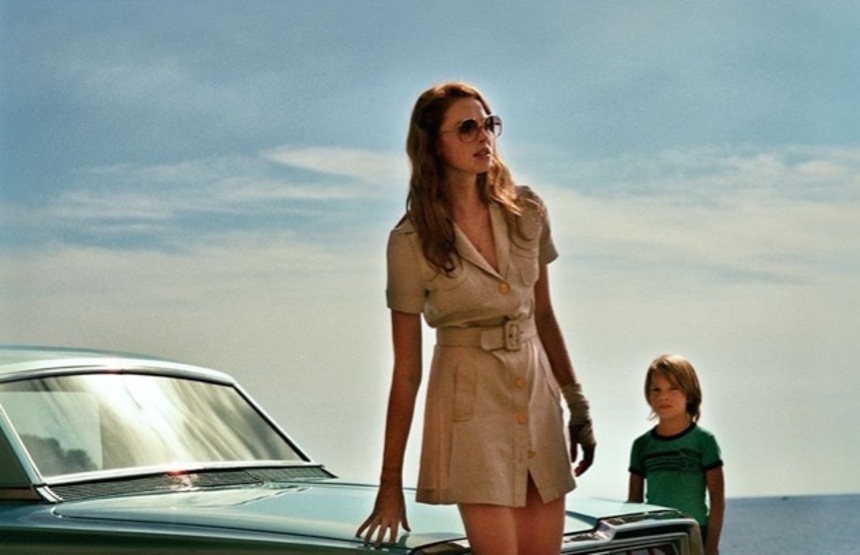Review: LA DAME DANS L'AUTO, Between Seduction and Manipulation It Manipulates

After a successful career as an illustrator and as a writer, Joann Sfar tackled the medium of cinema in 2010 when he directed Gainsbourg (Vie héroïque), a beautiful and surprisingly oneiric biopic about the famous French singer. He then followed up with two animated films, one he adapted from his own work (The Rabbi's Cat, 2011) and a second one for which he directed one segment (Kahlil Gibran's The Prophet, 2014).
With La Dame dans l'Auto avec des Lunettes et un Fusil (The Lady in the Car with Glasses and a Gun), Sfar comes back to live cinema with this adaptation of Sébastien Japrisot's homonymous novel, which was already transposed once in 1970 by Anatole Litvak. Sfar himself stated that he wanted to make a faithful adaptation of Japrisot's crazy novel by trying to bring a Lynchian mood to this noirish and nightmarish story.
La Dame dans l'Auto focuses on Dany, a beautiful redhead who works as a typist in an advertising company. She fantasizes about her boss and having another life. One day, when she is asked by her boss to drive his car back to his house, she decides on a whim to leave Paris and go to the South. Dany's road trip will soon be punctuated by strange encounters as she's slowly losing grip on reality.
Reuniting with the striking visual style he displayed in his first film, Sfar delivers a gorgeous and sulfurous neo-noir thriller that, just like Japrisot's novel, shows an American influence nuanced by a distinctive French touch. The director fills his feature with great kinetic and rhythmic skills, embracing the poisonous beauty of Freya Mavor, his main actress, with aestheticism and sensuality. The scene at the gas station conjugates all these elements, as Sfar uses magnificent split-screens, tracking shots, slow motion and soul music to create and capture everyone's fascination for Dany.
Even if its protagonist seems to convey all the codes of the prototypical femme fatale, La Dame dans l'Auto avoids any clichéd characterization of Dany. She does possess a feline look and a certain seductive power, but she simultaneously suffers from a terrible lack of confidence that forces her dreams to remain mere thoughts. Not far from being schizophrenic, she has to juggle between these two sides; something that Mayor perfectly encapsulates, either hypnotizing the audience or receiving its full empathy.
From this two-sided dimension, La Dame dans l'Auto plays with various levels of storytelling and consciousness. As Dany carries on with her trip, the film increases the occurrences of strange and unexplainable features, notably through the use of supposedly cognitive flashes. At first, the disruptive flash-backs and flash-forwards thicken the plot; then, as key scenes are exposed, one feels cheated by these for some of the flashes are not coined by the protagonist's feverish situation and don't belong to the fictitious universe.
These extradiegetic puzzling effects reveal to be purely manipulative attempts from Sfar to blur one's reading of the film and to force its mysterious appeal - I am not talking here about the usual misleading clues of the film noir genre, but about artificial set-ups that are solely intended to the audience. By travestying its storytelling for damageable narrative schemes, La Dame dans l'Auto results in giving a dishonest vibe to the viewers.
It is hard not to wish that Sfar would have elaborated more of his visual style, especially as it tends to vanish as the film goes on - the final revelation scene, which calls for mise en scène bravery, is so quickly and trivially executed that one remains unsatisfied. Despite this, La Dame dans l'Auto is a fascinating yet frustrating neo-noir thriller that hasn't fully exploited its potential. With its gorgeous 70s aesthetics and its killer soundtrack, the film should perform well and shows once again that Sfar is one of the most interesting new voices of French cinema.






